Subscribe to the Newsletter
Your cart is empty
Shop now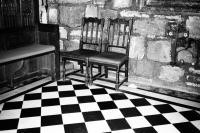
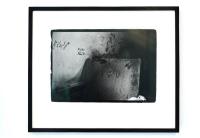
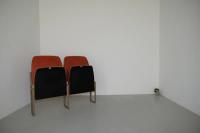
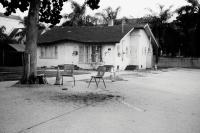
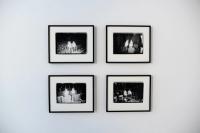
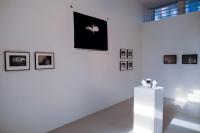
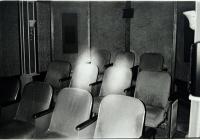
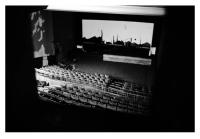
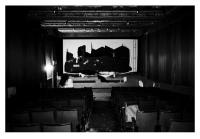









Greif Alumni: Q&A with Stella McGarvey
Negatives and traces of familiars inform Stella McGarvey’s “Lacunary”
We periodically invite our alumni – artists we have featured in the past – to share their latest work and projects with us. Stella McGarvey, a South London-based artist, works across photography, sculpture, and paper. Driven by a deep desire for connection, she infuses objects with an anthropomorphic presence, viewing them as familiars for ghosts through her predominantly darkroom-based practice.
McGarvey’s images from her “Lovers” series were featured in Christiane Monarchi and Eva Eicker’s Guest Room, “Wordbildsalat / Word-Image-Salad.” Expanding on this series, her recent solo exhibition “Lacunary” at Rabbet Gallery in London showcased both “Lovers” and her most recent works, curated by Francesca Hummler.
Francesca Hummler: Your work invites viewers to engage with presence and absence in a way that feels both intimate and universal. I’d love to begin by exploring how you approach these concepts and how audiences responded to the exhibition. What was it like to see your vision come to life in “Lacunary”? Were there any reactions from the audience that surprised you?
Stella McGarvey: It was the first time I've invited people to view a collection of my work in one space. I wanted to create a world that people could step into. I wasn't sure if the themes and symbols that feel so critical to me in my work would resonate, but people seemed to really understand the feeling and the intention behind the work and brought their own memories and experiences to the work. One visitor noted that the video piece reminded them of Victorian images of Ectoplasm and had the ‘ghostly liquidation of a dancer’. Another visitor referenced a ghost story, ‘Oh, Whistle, and I’ll Come to You, My Lad’, whose title comes from a Burns poem. They called it a study in loneliness. It felt really special to be able to share my work which is so often such a solitary process, primarily photographing inanimate objects and bringing them to life, alone in the darkroom.
FH: This show incorporated expanded sculptural pieces alongside your photographic work. How did you approach that interplay, and how do you see those forms evolving in your practice?
SM: I wanted the work to feel expansive; to play with the way that the image can be viewed and occasionally distort it. With the slide viewers, in order to view the image, which in of itself flickers as the old technology slowly degrades, you have to physically move your body. One lone slide viewer shown separate from the others, with a woman crouched, demands you to mimic her pose in order to see it. The interplay between the sculptural and photographic elements in Lacunary was about inviting the viewer to engage in a more physical relationship with the work. I wanted to explore how the photographic image could transcend the frame, creating a fuller, more immersive experience. The slide viewers and large-scale prints invited movement, while the video piece blurred the line between the static and the ephemeral. I see these sculptural elements evolving in future work as a way to further engage with physical space, but also to challenge the very notion of what a photograph is—sometimes it's not just an image; it's an experience. Looking ahead, I’m interested in how these forms can create a dialogue that moves beyond representation, becoming something more active and almost collaborative.
FH: Your work explores absence as something that can be made visible rather than simply being a void. Can you expand on this idea?
External Content
We are displaying external content here, and in that way, personal data is transmitted to third-party platforms. DER GREIF has no influence on this. You can read more about this in our privacy policy.
SM: The seeming ‘addition’ of parts of an image: a wing, a body, a spectre, is actually a removal of a part. I like to play with the perception of what a photograph might be. To play with ambiguity, and bring attention to the negative; highlighting voids and adding awareness to things that might otherwise be overlooked.
FH: How do you see traces – both photographic, like those created by darkroom chemicals or the marks left by dodging and burning on your hand prints, and emotional – playing into your work? Are they more about memory, loss, or something else entirely?
SM: Traces are absolutely key to my practice. There’s a quote by Duchamp that I love: “It’s not what you see that is art, art is the gap.” The lacunae, or gaps, are the focus of my work. Whether it’s the marks from dodging and burning in the darkroom or the emotional traces that are left behind in the images, I see these as signals of something past—whether it’s memory, loss, or longing. I’m particularly interested in how these traces create a narrative of absence, giving form to what isn’t there and encouraging viewers to contemplate the space between the visible and the invisible. Drawing attention to the paradox of a presence in an absence.
FH: I find your portraits of chairs have a distinctly Lynchian quality – they are a striking component of your visual language. When did you first start photographing them, and what drew you to this subject?
SM: My chair series, ‘Lovers,’ started in the spring of 2023. I noticed these apparently abandoned chairs—two side by side as if left mid-conversation—and I began to see them everywhere. I started photographing them because they seemed to tell a story about absence and presence. Chairs left in hallways, broken legged ones on street corners, velvet clad stacked in odd configurations—they all seemed to carry the weight of an absent dialogue, a fleeting connection. The chairs hold a kind of tenderness, as if they're silently waiting for the conversation to continue. They become a symbol of longing, of connection never fully realised. This series is about capturing the shadow of a moment missed and the ghosts they leave behind.
FH: Can you share more about the collaboration behind the exhibited lightbox and Dogwoman images. Does collaboration challenge or shift your personal artistic voice?
SM: The show includes concealed figures: Ava as the Dogwoman on the small scale slide viewers, and Elizabeth who features behind a billowing sheet in the light boxes. Collaborating with these trusted friends allows new ideas to percolate, Elizabeth said, “It’s so rare that when someone is deep in their own creative practice, in that special flow state, that you get to step in and have a unique insight into their work while also being actively involved. Your intuitions begin to meet, but you get to respond to the person whose project it is. It’s really magical.”—it’s in the creative dialogue that new ideas and directions get the chance to take shape.
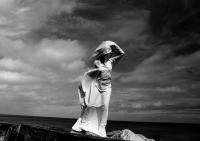
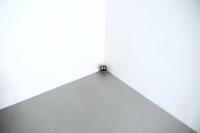
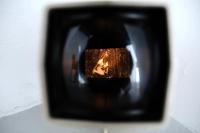
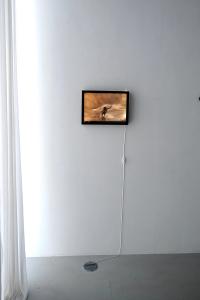
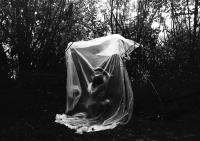
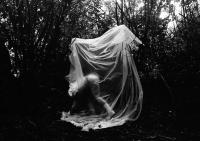
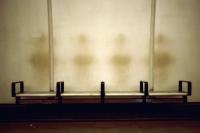
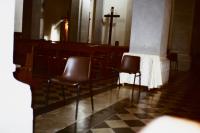








FH: Many of your images feature the female form draped in cloth, obscured, or disappearing. What draws you to this motif?
SM: There is something out of time for me about these forms, they become both these figures which might appear to be running or disguising themselves but are equally stoic. Their faces are often completely obscured, and become ones of crumpled dust sheets and silk.
FH: Is there a connection between this need to cover, hide, or disappear and broader themes of gender, identity, or spirituality in your work?
SM: The process of covering can be seen as a way of protecting oneself or, conversely, as a way of revealing something deeper. I’m drawn to the idea that identity is not a fixed, visible thing; it’s often layered, concealed, and formed through what is unseen. The veiling speaks to this fluidity and ambiguity—whether it's about societal expectations of gender or about the way we obscure aspects of our inner selves.
FH: How have your background, travels, or spiritual experiences shaped your imagery? Are there certain places that resonate with you and influence your work more deeply?
SM: Certain spaces—whether sacred or abandoned—hold a kind of energy or resonance that feeds into my imagery. Whether it’s the remnants of abandoned cinemas, forgotten corners, or places marked by time, these spaces seem to hold the vestiges of what once was. They serve as metaphors for how memory and experience accumulate, leave traces, and eventually fade.